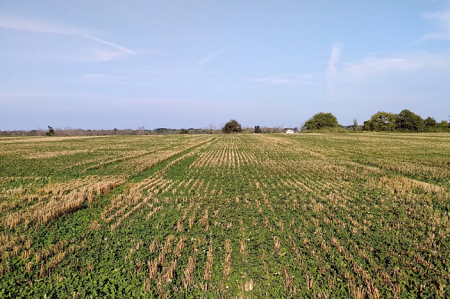Soil Fertility Benefits of Wheat in Rotation
Winter wheat harvest is now complete and before long the 2020 winter wheat crop will be seeded across the province (Figure 1). Yields have been better than expected for many. September planted wheat ranges from 100-130 bushels per acre, early October wheat ranges from 80-100 bu/ac and late October planted wheat yielded from 30 to 70 bu/ac. Straw yields have been strong. Quality has been good with high falling numbers and low levels of fusarium.
Long-term research at the University of Guelph’s Ridgetown campus shows that winter wheat in rotation provides an additional 10 bushels per acre to corn and 5 bushels to soybeans. At current crop prices, that means an extra $111 dollars per acre over a rotation that can be attributed to the wheat enterprise. But are there other benefits that wheat provides? And how might adding wheat to a corn-soybean rotation be positive from a soil fertility perspective?
Firstly, wheat in rotation improves the nitrogen use efficiency of corn. Research from the long-term rotation and tillage system trial in Ridgetown demonstrates that winter wheat in rotation reduces the maximum economic rate of nitrogen, or MERN, for corn. Between 2009 and 2013, the average MERN was 16 to 30 lbs/ac less with wheat compared to a corn-soybean rotation; in other words, it took less nitrogen to produce more corn. The researchers suggest that improved soil structure and enhanced crop root growth, along with an increased supply of soil organic nitrogen, may explain the results.
Winter wheat in rotation is also beneficial from a soil organic matter standpoint. Ontario research has generally found that the more frequently a small grain like wheat is in rotation, the higher the soil organic matter. Roots and belowground residue tend to contribute more to stable organic matter than aboveground residue, which may explain the positive effect of deep-rooted wheat. Organic matter is an important source of nutrients such as nitrogen, sulphur, phosphorus and boron. It improves soil aggregate stability and water infiltration, which means less runoff and faster drainage. More diverse rotations also enhance soil microbial activity, which promotes residue breakdown – an important function, especially with higher corn yields.
Wheat also provides an opportunity to seed a cover crop. In the case of red clover (Figure 2), the economics are clear: a full stand of red clover provides a nitrogen credit of 65-80 lbs per acre to the following corn crop. If red clover establishment is difficult, another cover crop, such as oats, can be seeded. Although oats will not provide any nitrogen, its fibrous root system will improve soil structure for the following crop – this is particularly helpful in dry years, where a good root system is critical for nutrient and water uptake.

Finally, having winter wheat in rotation provides an excellent opportunity to apply nutrients and address soil test levels. A review of decades’ worth of Ontario research has shown that when soil test phosphorus is within the range of 12-18 ppm (Olsen), starter fertilizer rates (i.e. 20-30 lbs P2O5/acre) achieve the most economic response for field crops. The same is true for potassium when levels are between 100-130 ppm. Research from OMAFRA/University of Guelph long-term P and K trials suggest that slightly higher soil test values (e.g. >20 ppm P and >120 ppm K) may be worth pursuing in some circumstances.
Use the period after wheat harvest to take soil samples. If you have soil test levels that have slipped in the last number of years, summer is an excellent time to apply phosphorus or potassium fertilizer with a low risk of environmental losses. And as livestock producers know, dry soil conditions also provide an excellent opportunity for manure application that limits compaction risk.
Source : Field Crop News